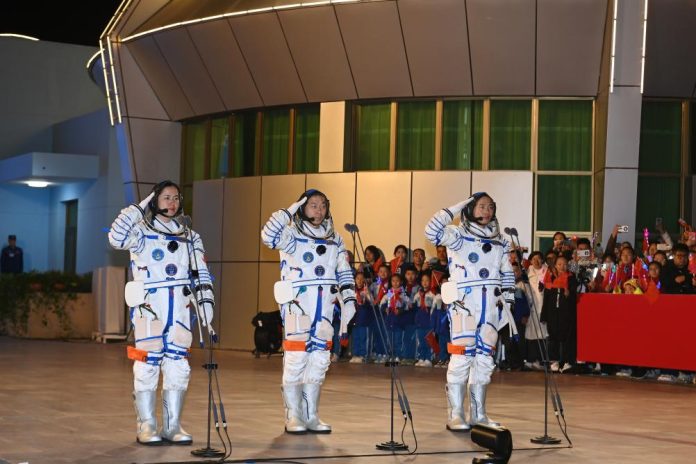China has announced the successful launch of a new three-person crew to its space station, including the youngest astronauts sent to the orbiting outpost, amid the country’s plans to expand its space programme.
The ship was launched on October 30 at 4:27 local time. The Long March-2F Y19 was used for this purpose. About 10 minutes later, the Shenzhou-19 manned spacecraft successfully separated from the rocket and entered the planned orbit.
A total of three crew members are on board the Shenzhou-19. Lin Xiqiang, deputy head of the manned flight department, said they will put 86 scientific experiments in orbit. Among which will also include experiments in medicine, biology, basic microgravity physics, materials science and space technology, the agency noted.
China Space Station is expected to welcome the new Shenzhou-19 crew led by veteran astronaut Cai Xuzhe and new astronauts Song Lingdong and female astronaut Wang Haoze around 6.5 hours after takeoff, according to the China Manned Space Agency (CMSE).
The space station is in orbit at an altitude of about 400 kilometres and is designed for three astronauts. The station can temporarily accommodate up to six people in case of crew rotation.
According to the report, the mission is the fourth manned mission of China’s manned aerospace project. It is the 33rd launch since the project’s inception, and the 543rd flight of the Long March series rocket.
Researchers from China Aerospace Science and Technology Corporation (CASC) have optimised the equipment and adjusted the layout of the spacecraft’s orbital module to increase its payload capacity for the Shenzhou-19 space mission. Chen Tongxiang, an expert with the CASC, said:
Compared with Shenzhou-18, the payload space of Shenzhou-19 has been increased by 20 percent, making it possible to transport more time-sensitive and essential supplies for astronauts and related systems.
This will not only allow more research equipment and supplies to be delivered into space, but also provide more efficient and stable in-orbit support for the long-term operation of China’s space station, she also said.
China is also exploring ways to reduce the cost of transporting supplies to its space station. China’s Tiangong space station has rich scientific and applied resources and a full range of support facilities. The Shenzhou manned transport system and the Tianzhou cargo system provide reliable and stable back and forth transportation of astronauts and supplies between Earth and space.
China has significantly expanded its space programme in recent years and this month announced an ambitious plan to become a world leader in space exploration by 2050.
